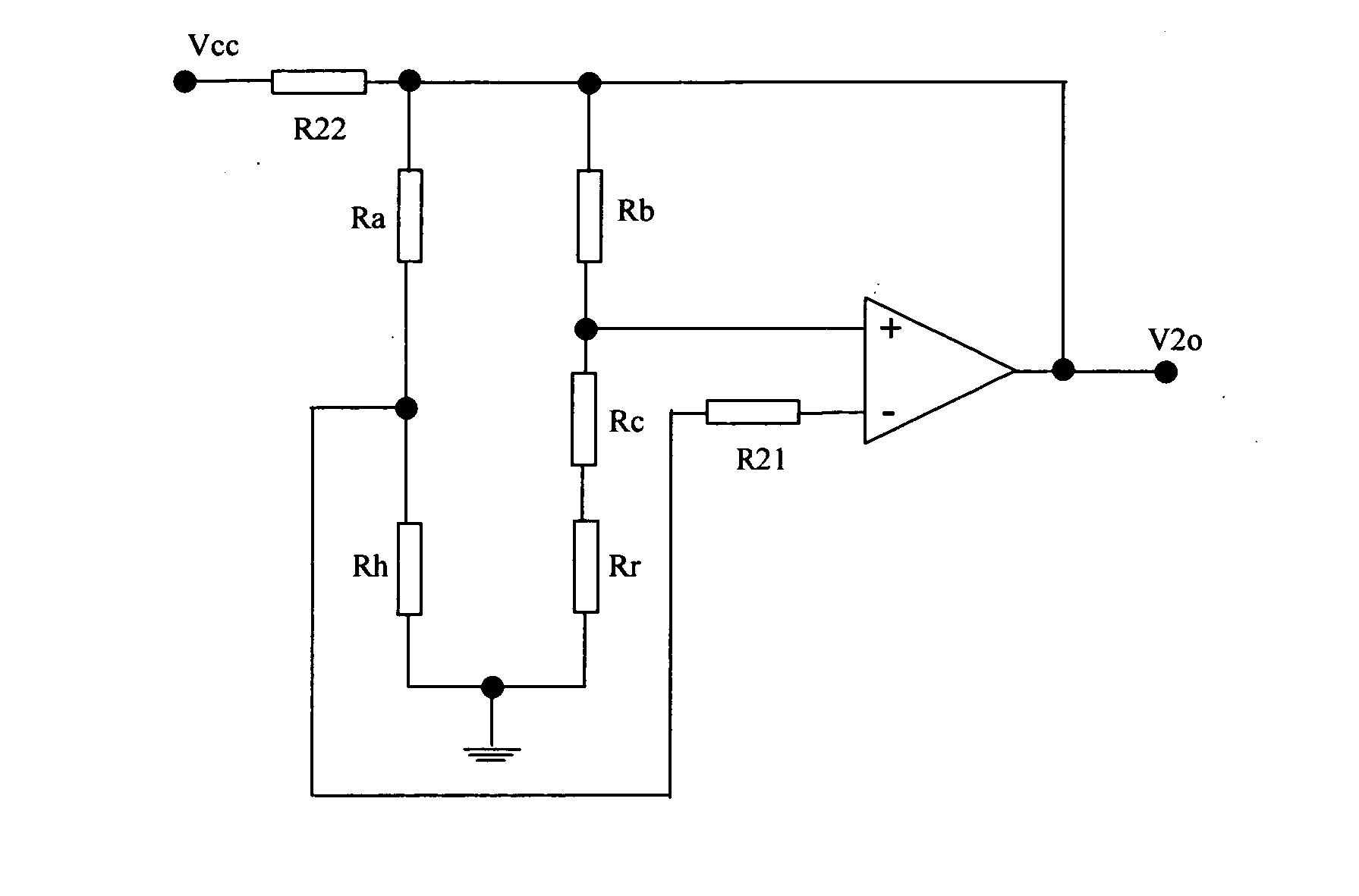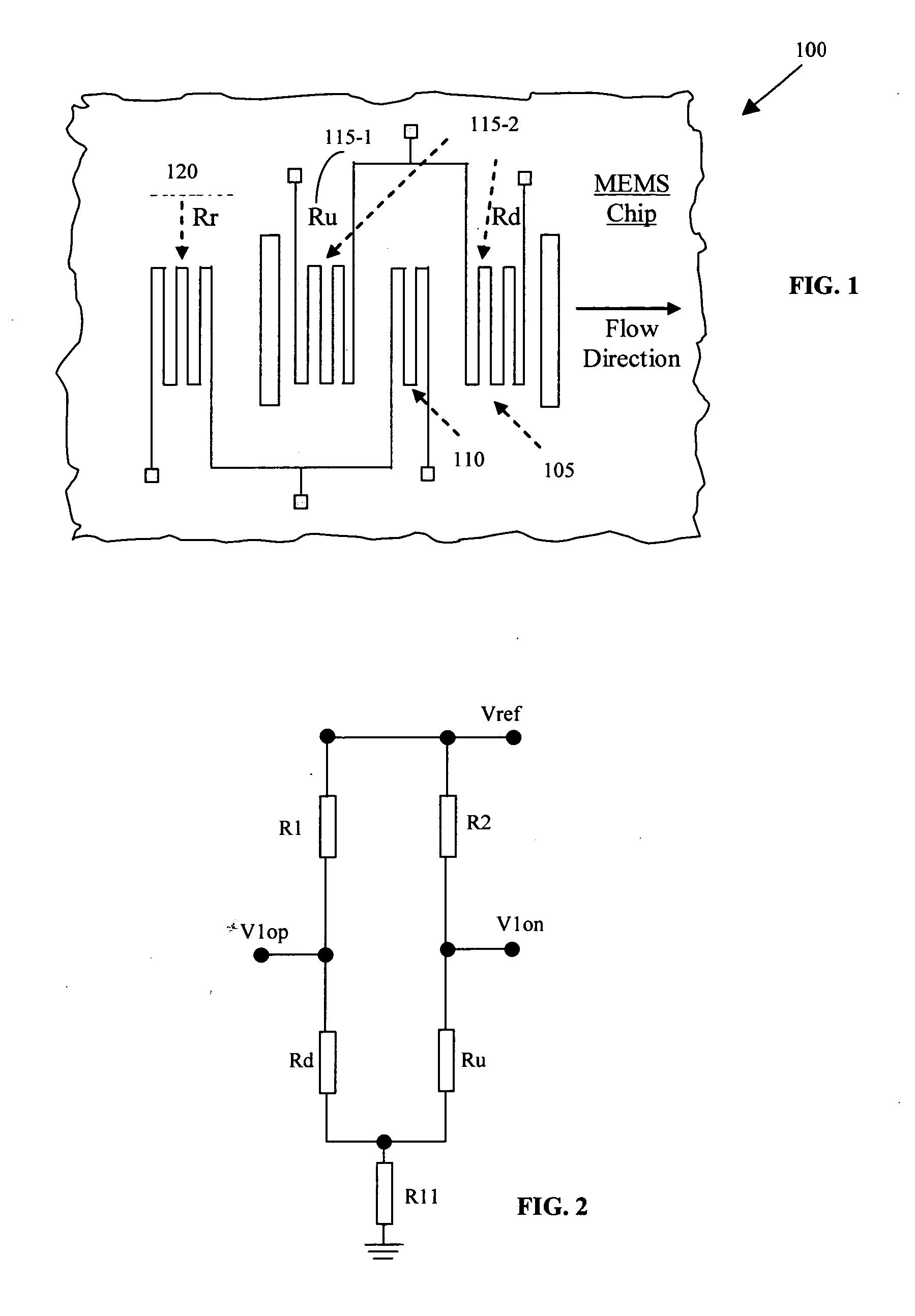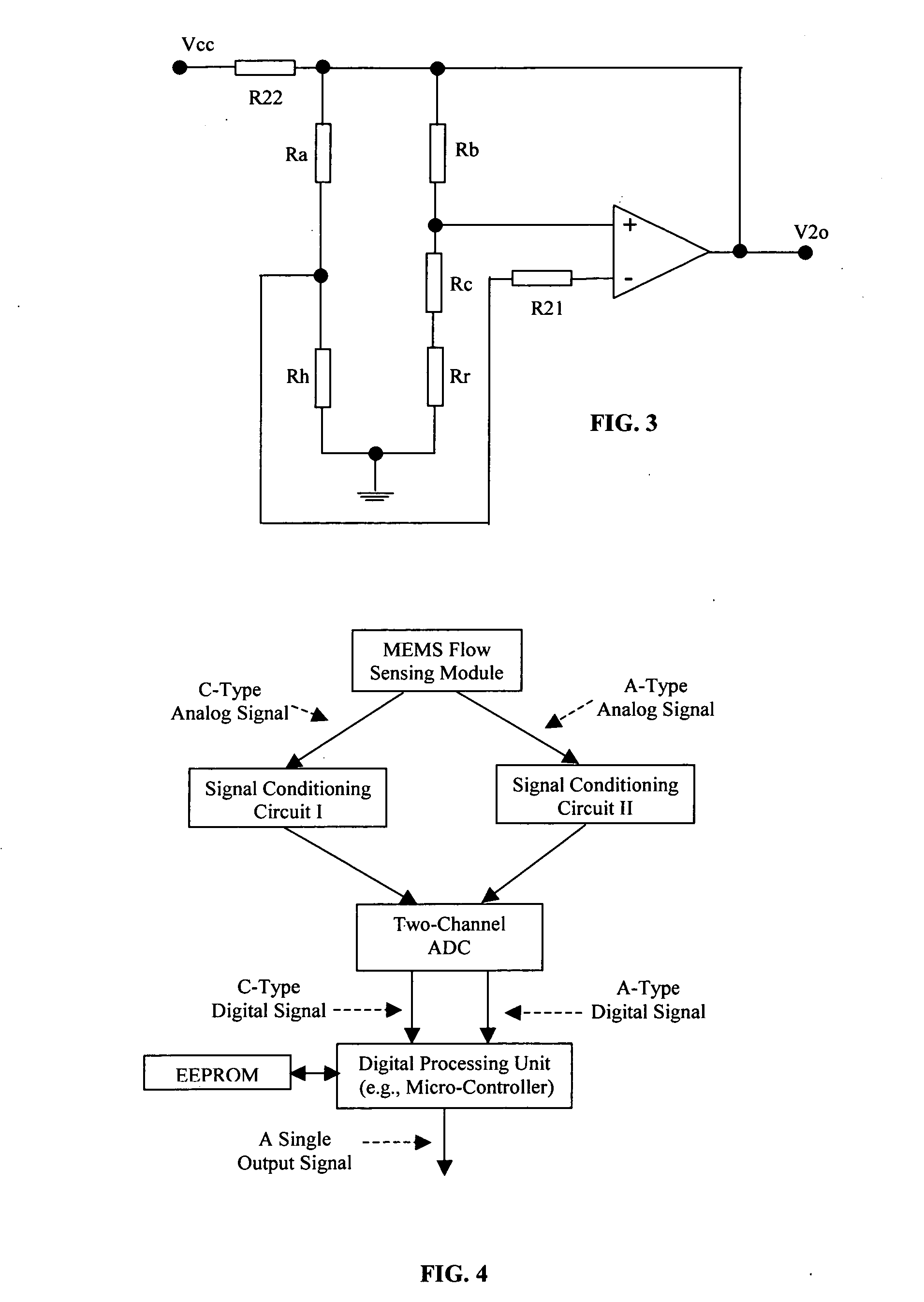Micromachined thermal mass flow sensors and insertion type flow meters and manufacture methods
- Summary
- Abstract
- Description
- Claims
- Application Information
AI Technical Summary
Benefits of technology
Problems solved by technology
Method used
Image
Examples
Embodiment Construction
[0043]FIG. 1 shows a top view of a flow rate sensor 100 as a preferred embodiment of the present sensor. The flow rate sensor 100 is supported on a membrane 105 and is manufactured by applying the MEMS manufacturing processes as illustrated below. The flow rate sensor includes a heater 110 and temperature sensing resistors 115-1 and 115-2 disposed on the upstream and downstream respectively of the heater 110. The heater 110 is a thin-film heating element and the temperature sensing resistors 115-1 and 115-2 is a pair of thin-film sensing resistors on a thin thermally isolated membrane 105 disposed over a micro-machined silicon substrate. The upstream and downstream sensing resistors 115-1 and 115-2 respectively may be symmetrical, i.e., resistors of equal resistance, or non-symmetrical resistors, i.e., resistors of different resistances. The upstream and downstream sensing resistors may be arranged to locate at either a symmetrical or non-symmetrical locations. The flow rate sensor ...
PUM
 Login to View More
Login to View More Abstract
Description
Claims
Application Information
 Login to View More
Login to View More - R&D
- Intellectual Property
- Life Sciences
- Materials
- Tech Scout
- Unparalleled Data Quality
- Higher Quality Content
- 60% Fewer Hallucinations
Browse by: Latest US Patents, China's latest patents, Technical Efficacy Thesaurus, Application Domain, Technology Topic, Popular Technical Reports.
© 2025 PatSnap. All rights reserved.Legal|Privacy policy|Modern Slavery Act Transparency Statement|Sitemap|About US| Contact US: help@patsnap.com



